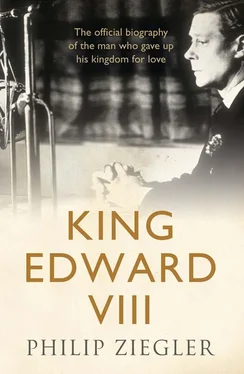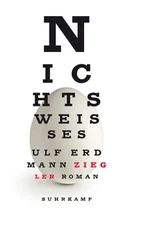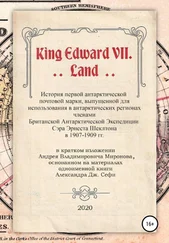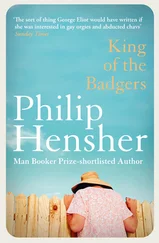King Edward VIII
Philip Ziegler

Contents
Cover
Title Page King Edward VIII Philip Ziegler
List of Illustrations List of Illustrations Princes Albert and Edward bathing at Cowes ( Pasteur Institute) The Princess of Wales with Prince Edward (Al Fayed Archives) The Prince in formal dress (Sir Michael Thomas) Punting at Oxford (Sir Michael Thomas) The Prince on a route march (Al Fayed Archives) With the King’s Guard (Pasteur Institute) Portia Cadogan (Al Fayed Archives) Rosemary Leveson-Gower (Imperial War Museum) The Prince as Chief Morning Star (The Royal Collection © 2012) Freda Dudley Ward (Lady Laycock) Taking a jump successfully (Al Fayed Archives) Falling at the last fence (Al Fayed Archives) With Audrey Coates at Drummond Castle (Lady Alexandra Metcalfe) With the Duchess of York (Al Fayed Archives) Skiing with Prince George (Lady Alexandra Metcalfe) Mrs Simpson (Michael Bloch) The Duchess’s bedside snapshot of the Duke (Al Fayed Archives) Wedding photograph (Lady Alexandra Metcalfe) The Windsors in German (The Royal Collection © 2012) Dignitaries in Nassau (Al Fayed Archives) A visit to the United Seamen’s Service (Al Fayed Archives) In dressing gown, photographed by the Duchess (Al Fayed Archives)
Preface
Family Tree
1 The Child
2 The Youth
3 ‘Oh!! That I Had a Job’
4 The Captain
5 L’Éducation Sentimentale
6 The Role of the Prince
7 The First Tours
8 India
9 ‘The Ambassador of Empire’
10 ‘Half Child, Half Genius’
11 ‘A Steady Decline’
12 The Last Years as Prince
13 Mrs Simpson
14 Accession
15 ‘The Most Modernistic Man in England’
16 The King and Mrs Simpson
17 The Last Weeks
18 Abdication
19 Exile
20 Married Life
21 The Duke in Germany
22 Second World War
23 Spain and Portugal
24 The Bahamas
25 The American Connection
26 What Comes Next?
27 ‘Some Sort of Official Status’
28 The Duke as Author
29 The Final Years
Nomenclature
Notes
Bibliographical Notes
Index
Acknowledgments
Footnotes
Picture Section
About the Author
From the reviews of King Edward VIII
Copyright
About the Publisher
Princes Albert and Edward bathing at Cowes ( Pasteur Institute)
The Princess of Wales with Prince Edward (Al Fayed Archives)
The Prince in formal dress (Sir Michael Thomas)
Punting at Oxford (Sir Michael Thomas)
The Prince on a route march (Al Fayed Archives)
With the King’s Guard (Pasteur Institute)
Portia Cadogan (Al Fayed Archives)
Rosemary Leveson-Gower (Imperial War Museum)
The Prince as Chief Morning Star (The Royal Collection © 2012)
Freda Dudley Ward (Lady Laycock)
Taking a jump successfully (Al Fayed Archives)
Falling at the last fence (Al Fayed Archives)
With Audrey Coates at Drummond Castle (Lady Alexandra Metcalfe)
With the Duchess of York (Al Fayed Archives)
Skiing with Prince George (Lady Alexandra Metcalfe)
Mrs Simpson (Michael Bloch)
The Duchess’s bedside snapshot of the Duke (Al Fayed Archives)
Wedding photograph (Lady Alexandra Metcalfe)
The Windsors in German (The Royal Collection © 2012)
Dignitaries in Nassau (Al Fayed Archives)
A visit to the United Seamen’s Service (Al Fayed Archives)
In dressing gown, photographed by the Duchess (Al Fayed Archives)
It is now more than twenty years since my biography of King Edward VIII appeared and three-quarters of a century since the abdication. To most contemporary readers Edward VIII’s father and grandfather – King George V and King Edward VII – are shadowy figures. Even George VI is remembered, except perhaps by those who experienced him as a wartime monarch, more for being the father of the present Queen than as a figure in his own right. Yet Edward VIII, who was on the throne for less than a year, remains vividly in the popular imagination. Within the last two decades there have been more than twenty further books dealing with his life or certain aspects of it, not to mention newspaper articles galore, plays, television documentaries, even a musical comedy. The Duchess of Windsor has been quite as prominent. There have been several recent biographical studies – the latest of which quotes letters suggesting that Mrs Simpson, as she then was, was still in love with, or at least anxious to keep her lines open to, her estranged husband, even when her courtship by the King was at its fiercest. But neither Duke nor Duchess in isolation is the principal focus of this intense attention; it is above all their relationship which has captured the public’s interest and is almost as potent an attraction now as it was in 1936. ‘The king who gave up his throne for love’ is a cliché of romantic fiction, but it is also an accurate rendering of that extraordinary event. Nothing can diminish its potency.
The fact that the Prince of Wales has now married Camilla Parker Bowles, both parties with a divorce behind them, inevitably makes one wonder whether there might have been no abdication if contemporary morality had stood then where it does today. The question whether the present Duchess of Cornwall might one day become Queen has, of course, not yet finally been resolved but, in the closing days of the abdication crisis, Edward VIII seemed ready to contemplate a morganatic marriage. The problem might therefore not have arisen. Would Mrs Simpson be acceptable today as consort of the King? Probably not. She had been divorced not once but twice, with both husbands still living. She was an American – not in itself a reason for rejecting her, but reinforcing the uneasy conviction that she did not belong so close to the throne. She was seen, fairly or unfairly, as being a smart, hard-boiled, wise-cracking society figure – an image which did not and does not fit happily with what the British people expect of their royal court. But the moral certainties of 1936 have been diminished if not extinguished in 2012 – the issue would be more keenly debated and the answer might possibly be different.
It may be for his marriage that Edward VIII is particularly remembered, but in a way he seems much closer to contemporary society than his far more considerable father, brother and niece. This is the age of celebrity, when, perhaps more than ever before, people are celebrated not for what they have done but for what they appear to be. Nobody would ever have described George V and George VI or indeed Elizabeth II as ‘celebrities’; Edward VIII would have rejoiced in the title, or at least accepted it with equanimity. He saw himself as a thoroughly modern monarch, a reformer, rejecting the outdated pomposities of the past, adopting a style which was less formal, less bound by protocol, more relevant to the needs of the day, than the creaky old court he had inherited. This was not all fantasy. He had some good ideas and, if he had had the energy and determination to carry them through, he might indeed have made a valuable contribution to the British monarchy. But it is in the nature of celebrities that they shine only fitfully and leave little mark in the pages of history. Edward VIII’s intentions were often excellent; his ability to carry them through to fulfilment was sadly lacking.
Читать дальше













